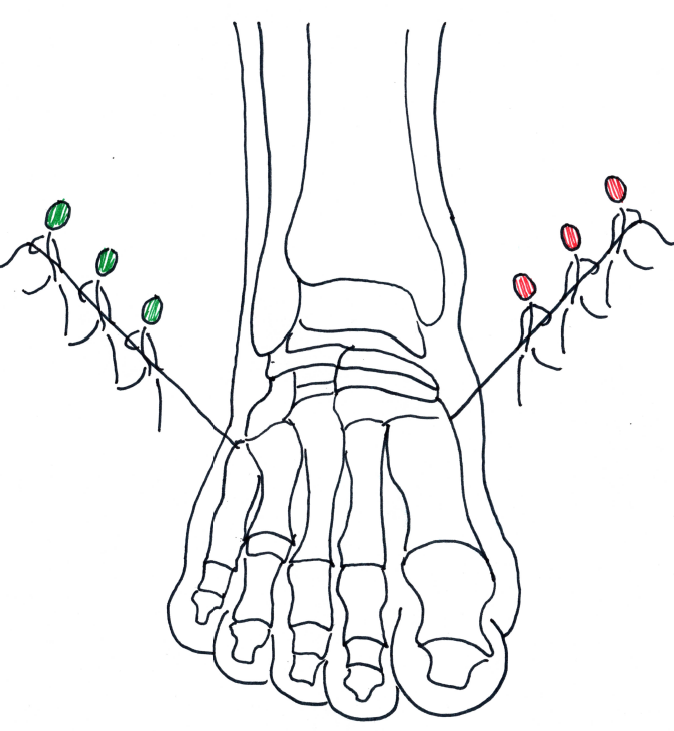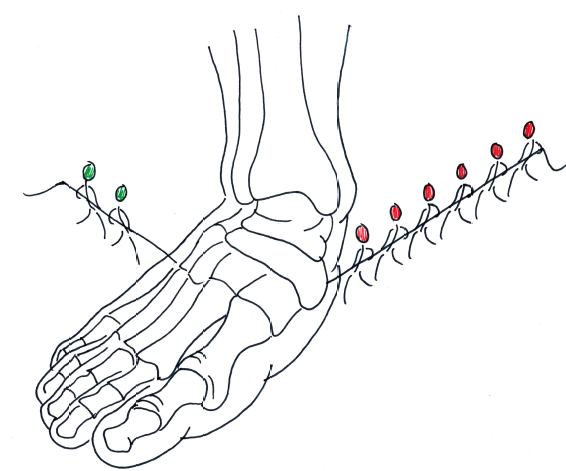What is a flat foot?
A ‘flat foot’ is as the name suggests a foot with a reduced arch which appears ‘flat’. A foot may be so flat the complete sole of the foot may touch the ground.
The correct anatomical name for a flat foot is a ‘pes planus’ foot posture.
Why do people have flat feet?
There are a number of reason why people might have a flat foot
-Hyper mobile joints – the normal ligaments and joints that support the arch of the foot may move more than they should – this means when someone stands the arch can no longer support itself and the foot collapses
 – Tibialis posterior tendon dysfunction – The tibialis posterior muscle and tendon supports the arch of the foot
– Tibialis posterior tendon dysfunction – The tibialis posterior muscle and tendon supports the arch of the foot
 – Children – It is normal for children to have a flat foot as they are developing. This is due to the increased mobility in the joints and the fact that the bones in the foot are not fully formed
– Children – It is normal for children to have a flat foot as they are developing. This is due to the increased mobility in the joints and the fact that the bones in the foot are not fully formed
– Over weight – Increased weight may overload the normal structures that support the arch resulting in its collapse
What is the problem with having flat feet?
There is nothing wrong with having a flat foot but in some people it can result in a number of long term problems. These include:
– Tibialis posterior tendon overuse –
 In a neutral foot (see above image) the muscles on the inside of the foot (invertors) work just as hard as the muscles on the outside of the foot (evertors).
In a neutral foot (see above image) the muscles on the inside of the foot (invertors) work just as hard as the muscles on the outside of the foot (evertors).
 In a flat foot or a foot that is not supported (see above image) the muscles on the inside of the foot (invertors) work a lot hard to try and correct the position of the foot – overtime this can result the degeneration of the tibialis posterior tendon.
In a flat foot or a foot that is not supported (see above image) the muscles on the inside of the foot (invertors) work a lot hard to try and correct the position of the foot – overtime this can result the degeneration of the tibialis posterior tendon.
– Dorsal Midfoot compression

– Sinus tarsi pain

– Ankle Arthrtitis
– Great toe joint dysfunction
Orthotic Treatment of flat feet?
There are a number of different orthotic designs available for flat feet. Most orthotic designs are simply arch supports.
These are not ideal for the flat foot, often only irritating the arch of the foot. This is due to the subtalar joint axis position. The diagram below shoes the axis of the subtalar joint.
– When there is pressure in the green area the foot will flatten (pronation).
– When there is pressure on the axis itself (as what happens with most arch supports) there will be no movement sometimes only discomfort.
– Pressure on the inside of the subtalar joint axis (the red area) raises the arch of the foot (supination). Therefore, the most appropriate design for a flat foot is a rearfoot orthotic

